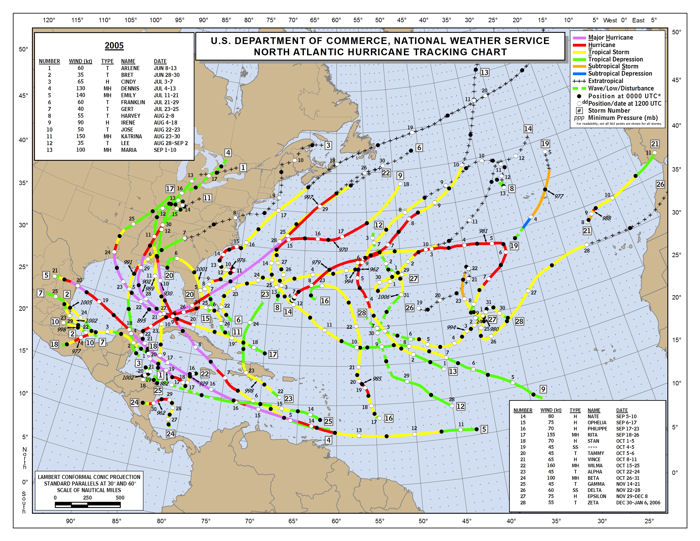Weather Forecasting
- By:
- Edward A. Reid Jr.
- Posted On:
- Aug 17, 2021 at 3:00 AM
- Category
- Climate Change
Weather forecasting: the prediction of the weather through application of the principles of physics, supplemented by a variety of statistical and empirical techniques., Brittanica
There are fundamentally two types of weather forecasts. Short term forecasts (1-15 days ahead) are developed largely based on observation of existing weather patterns and projections of those patterns into the future while long term forecasts (seasonal or annual) are based on historical records and measured deviation of factors believed to affect the weather from historical norms. The availability of satellite imagery combined with wind speed and direction, temperature and humidity data and experience with development of weather in the region has allowed short term forecasts to be extended out to up to 15 days. However, the forecast accuracy declines as the forecast period is extended, because there are so may factors which can alter weather patterns over time.
One critical example of short term forecast weakness is the projection of the path and intensity of tropical depressions. The development of specific tropical depressions is not predictable. The existence of a tropical depression is identified from satellite imaging. The movement of the depression is then tracked and its intensity measured.

There is no certainty that any specific tropical depression will develop into a tropical storm or ultimately into a tropical cyclone (hurricane or typhoon) of some intensity. Satellite monitoring of the depression is used to determine whether it has developed into a tropical storm, at which point aircraft monitoring of storm wind speed and barometric pressure documents further development and storm path and speed. Multiple computer models are then used to project future path and intensity.

Similarly, weather observations can establish that conditions are suitable for the development of severe thunderstorms and tornadoes, but the development of a specific tornado or cluster of tornadoes is not predictable. Tornado strength and direction are also not predictable, though they are closely monitored once development has occurred.
Examples of long term weather forecasts include the seasonal tropical cyclone forecasts developed annually by the National Hurricane Center. These forecasts are developed based on historical experience combined with analysis of deviation of factors such as sea surface temperature deviations from historical norms. They provide estimated ranges of number of named storms, number of hurricanes by intensity category and number of projected landfalls. However, the National Hurricane Center was not able to predict the 12 year “hurricane drought” during which no category 3 or higher hurricanes made landfall in the US, nor the recent 3 year “hurricane drought” in which no hurricanes formed in the Gulf of Mexico.
Other examples of long term weather forecasts include seasonal projections of regional temperature deviations from climatological norms, drought location and duration, winter snow cover. These forecasts are subject to frequent revisions as unpredictable events and conditions affect the anticipated weather patterns.
The accuracy of both short term and long term forecasts will continue to improve as instrumental data and satellite observations accumulate and our understanding of our complex and chaotic atmosphere improves.
